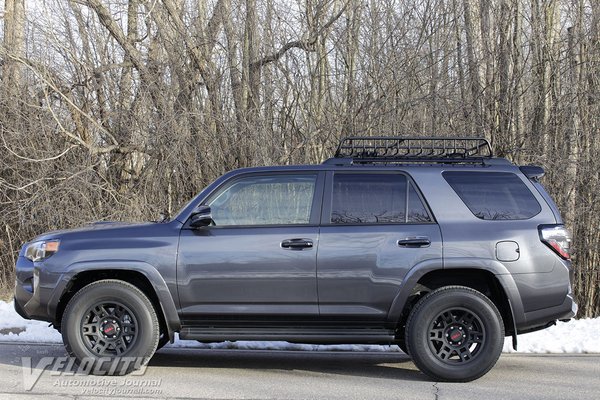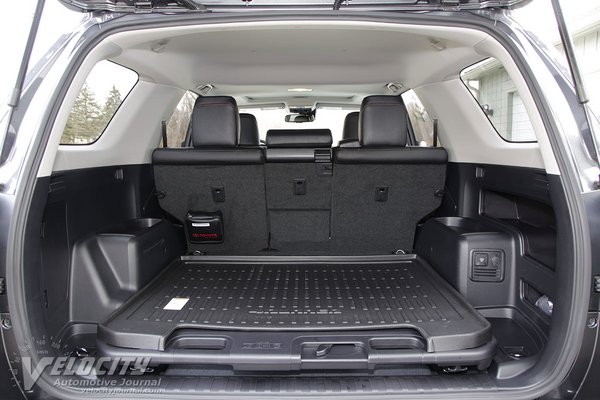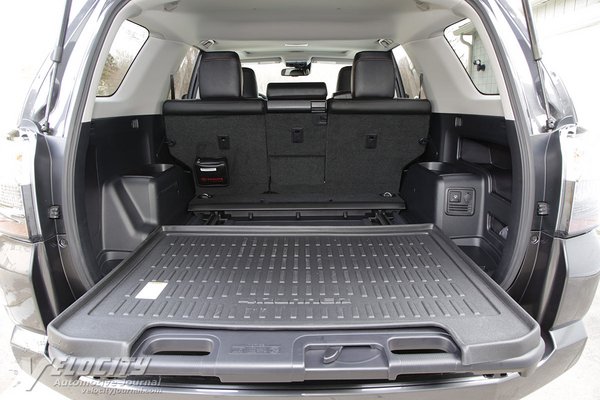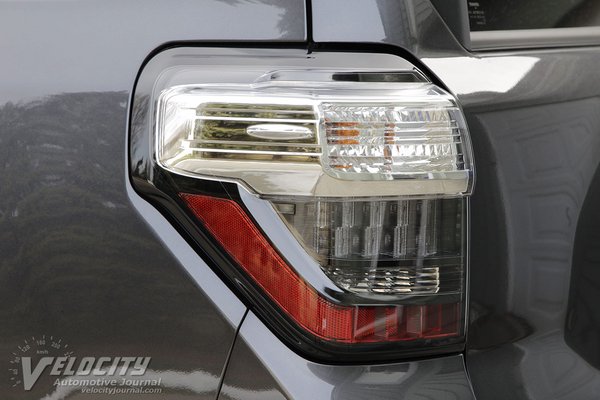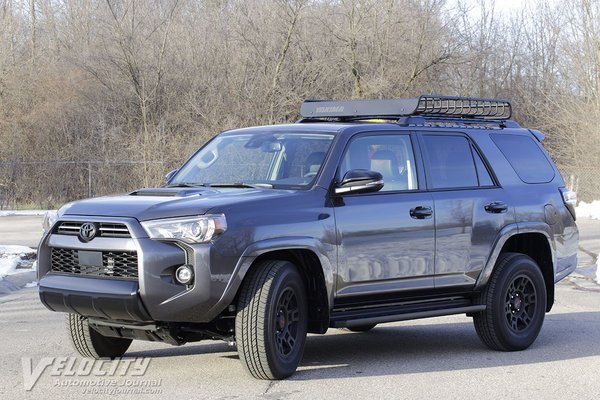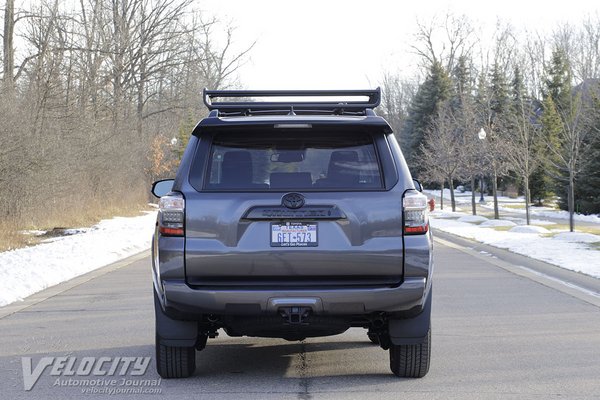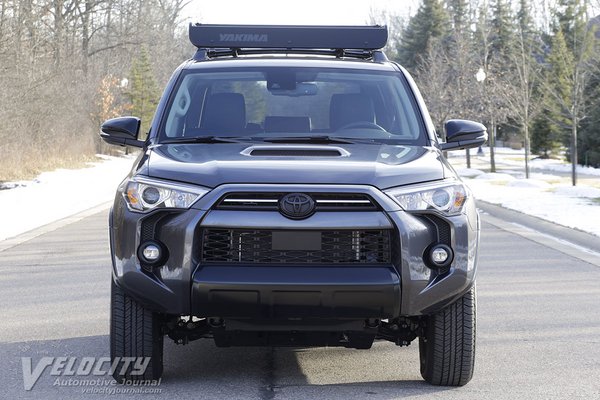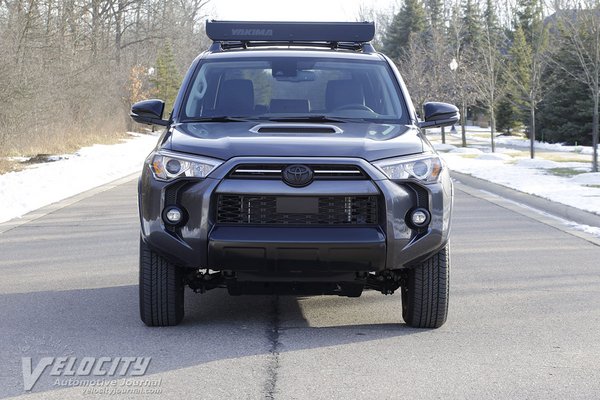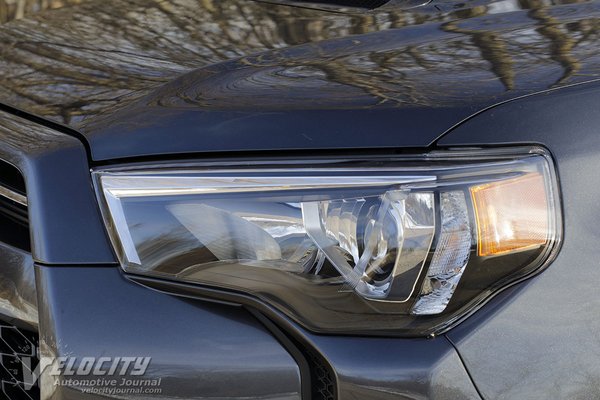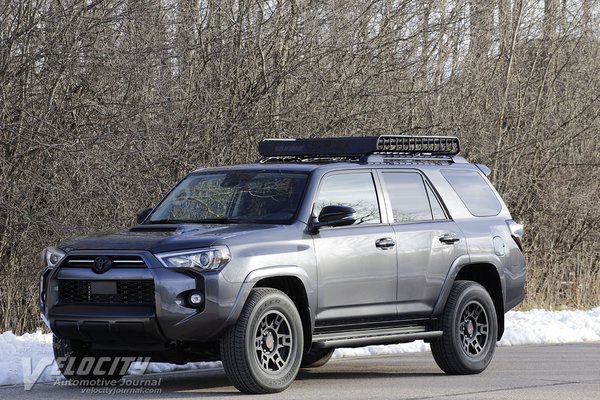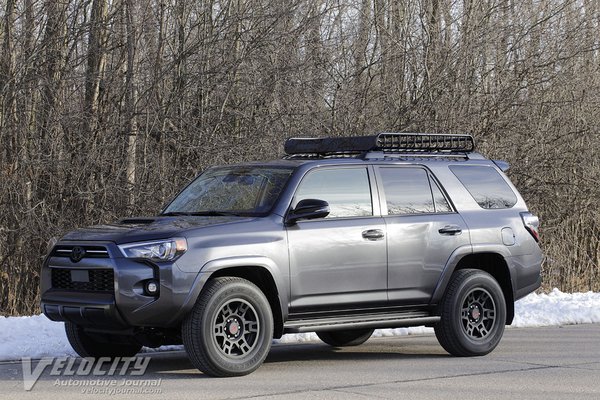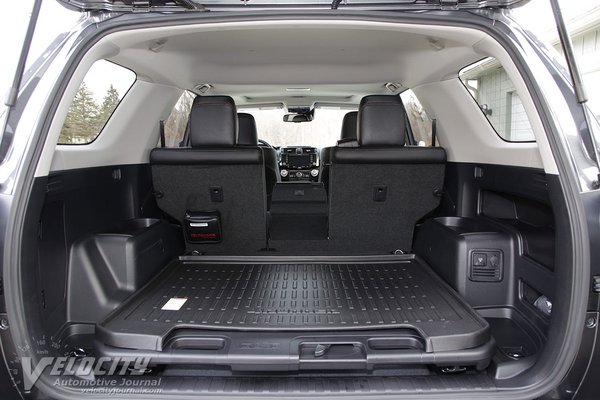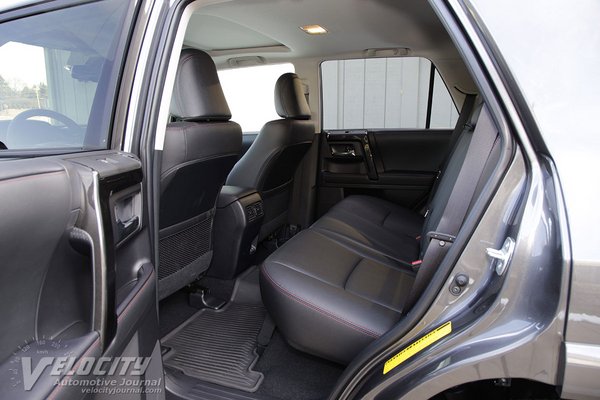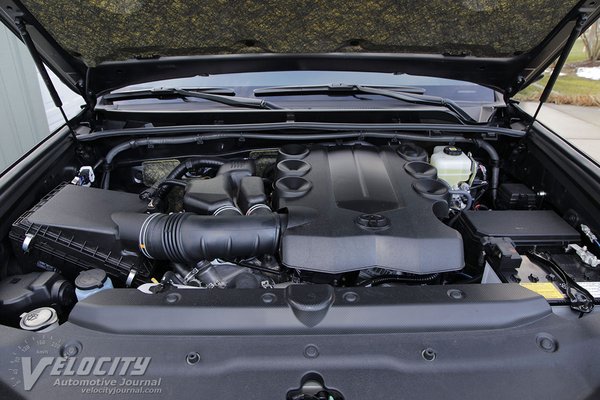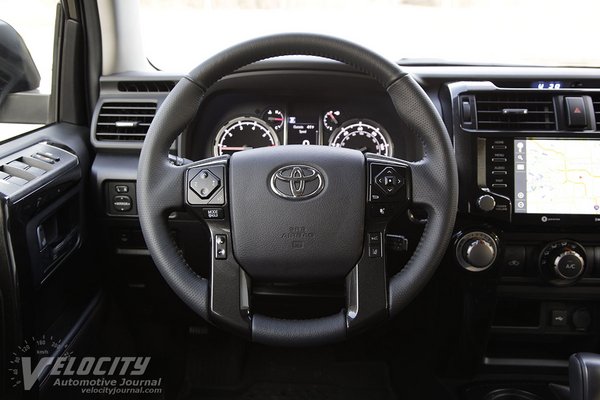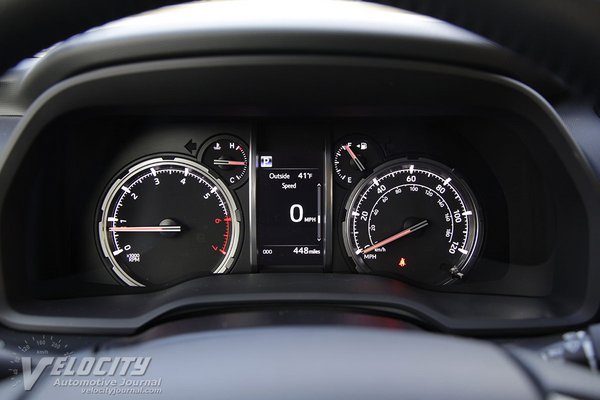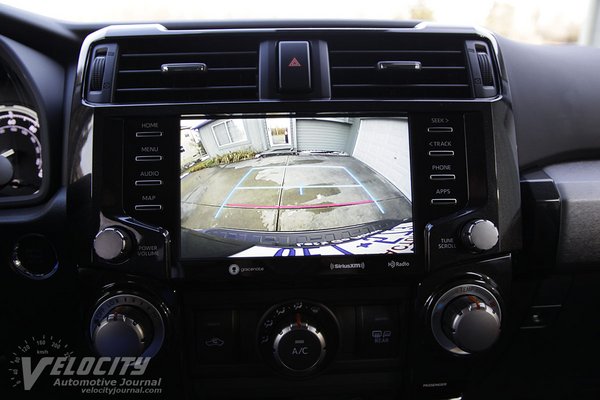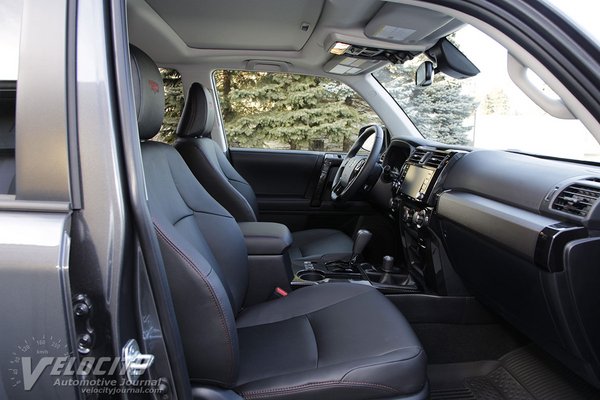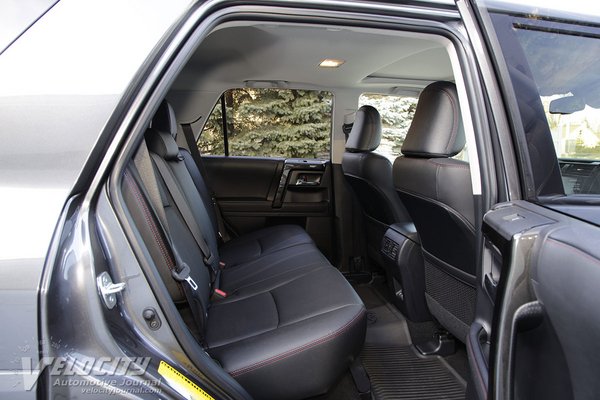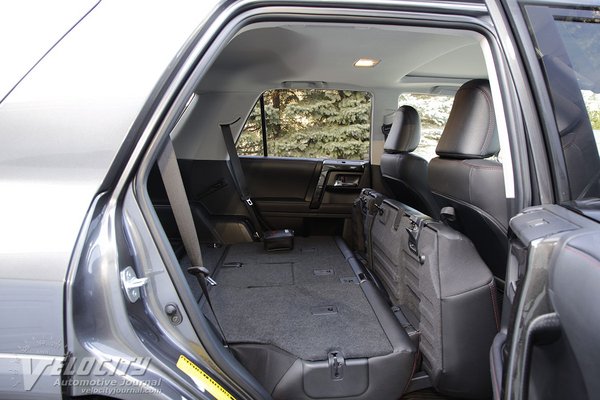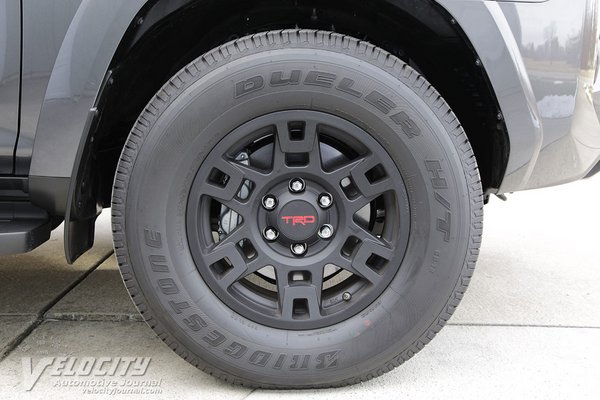2021 Toyota 4Runner Venture Special Edition
05/08/2021
Shahed Hussain
The 4Runner has been in Toyota's lineup for more than 35 years, yet has never deviated from its truck-based roots. As most of its competitors have transformed into crossovers, the 4Runner stands apart as a real SUV. Although exterior styling and powertrain have remained essentially unchanged since 2014, Toyota has updated the 4Runner with current connectivity and safety technology enhancements.
Toyota sells the 2021 4Runner in nine models, starting from the base SR5 ($36,765) to the TRD Pro ($50,745). Our test vehicle was a 4WD Venture Special Edition priced at $44,895. Options consisted of running boards ($599), moonroof & sliding rear cargo deck ($980), cargo mat ($100) and carpeted floor mats ($169). Adding the $1,175 delivery fee and subtracting the $750 package savings totals up the MSRP to $47,168. Significant standard equipment includes LED headlights, transfer case skid plate, rear spoiler, Yakima cargo basket, TRD 17-in. matte black wheels, heated front seats, 8-way power driver's seat, 4-way power passenger seat, 8-in. touchscreen, navigation, Android Auto, Apple CarPlay, Connected Service - Safety Connect, Wi-Fi Connect, and 8-speaker audio system. Standard active safety technologies include: pre-collision system, lane departure alert, dynamic radar cruise control, vehicle stability control, and hill start assist control
All 4Runners are powered by a 4.0L V-6 mated to a 5-speed automatic. A part-time 4WD system with a high/low transfer case (2.566:1 low range ratio) is available on most models; the Limited and Nightshade Special Edition get a full-time 4WD system with a Torsen(R) center differential and variable torque split. The fuel-injected DOHC all-aluminum V-6 is rated at 270-bhp @ 5,600 RPM and 278 lb.-ft. @ 4,400 RPM. Although other competitors are equipped with 6 or 8-speed gearboxes, the 4Runner still uses a wide ratio 5-speed automatic coupled to a 3.727:1 final drive ratio. Fuel consumption is estimated at 17/20 MPG (4WD). We averaged an unimpressive 16 MPG in mostly city driving, probably due to the extra drag from the roof-mounted Yakima cargo basket.
As with most serious SUVs, the 4Runners has an independent front and solid axle rear suspension. At the front is a double-wishbone layout with coil springs, dampers and stabilizer bar. The rear axle is controlled via coil springs, dampers, four locating links, lateral rod and a stabilizer bar. An optional Kinetic Dynamic Suspension System (KDSS) enables extended wheel travel by reducing the effect of the stabilizer bars. KDSS is only available on the TRD Off-Road Premium and Venture Special Edition. Most 4Runner models are equipped with 17-inch diameter alloy wheels and P265/70R17 mud and snow-rated tires (Bridgestone Dueler H/T in our test vehicle). Limited and Nightshade Special Edition models get 20-inch diameter alloy wheels on P245/60R20 tires. A full-size spare tire is standard. The power-assisted rack-and-pinion steering is geared for 2.7 turns lock-to-lock. Brakes are ventilated discs at all four wheels: 13.3 in. dia. rotors in front and 12.3 in dia. rotors in the rear. Ground clearance is an impressive 9.0 inches for the 2WD 4Runner, and an even higher 9.6 inches with the 4WD model. Approach angles are 30/33 degrees (2WD/4WD) and the departure angle is 26 degrees. Toyota rates all 4Runner models with a 5,000 lbs. towing capacity per the SAE J2807 standard. Curb weight ranges from 4,400 lbs. (SR5 4x2) to 4,805 lbs. (Limited 4x4).
The 4Runner's interior reflects its utilitarian heritage: durable hard plastic covers the dashboard, but touch points such as door armrests and upper door trim are padded. The gauge cluster consists of an analog tachometer and speedometer, accompanied by smaller coolant and fuel level meters. A multi-function trip computer display shows vehicle status. The perforated leather-wrapped steering wheel has integrated mobile phone, trip computer and audio controls. On the center stack are knurled knobs for audio and climate control systems. The infotainment touchscreen is flanked with buttons and knobs for quick access to frequently used settings. A 12V outlet and a USB port enable charging and connectivity for mobile devices. Next to the console cup holder are rotary knobs for the front seat heaters and the power rear hatch window switch. Under the center armrest is a large bin and an additional 12V outlet. The gated shifter for the 5-speed automatic has Sport and manual gear select modes. A smaller lever on the center console shifts the transfer case from 2WD to 4WD High and 4WD Low. Dual knobs on the overhead console enable crawl control and selectable terrain modes to optimize powertrain settings for off-road trails. Engaging the rear differential lock button limits wheelspin on low traction surfaces.
Genuine leather seating is only available in the 4Runner Limited; all other models get Toyota's Softex synthetic leather. Front seats comfort is acceptable, but the flat bolsters provide minimal lateral support. The driver benefits from 8-way power settings plus adjustable lumbar support; the front passenger gets a 4-way power seat. Rear seating is spacious for two occupants with generous legroom, but the center rear position is only suitable for short trips due to the hard seatback. Both front and rear headroom are sufficient for 6-ft. tall occupants. Dual HVAC vents and USB ports in the rear console should minimize complaints from back seat passengers. The power retracting window in the rear hatch allows convenient interior access and loading. A 120V AC and a 12V DC outlet in the rear cargo area deliver power for small appliances and electronics. The optional sliding rear cargo deck enables easy access to bulky coolers and camping gear.
The 4Runner's V-6 and 5-speed automatic deliver adequate acceleration in urban driving conditions when lightly laden. The 2+ ton curb weight combined with a large gap between first (3.52:1) and second gear (2.042:1) ratios are responsible for the 4Runner's leisurely part-throttle acceleration. On the highway, moderate acceleration above 70 MPH usually triggers a downshift into fourth gear.
Despite its off-road tuned suspension, the 4Runner tracks accurately at 80 MPH, so extended road trips should not be a challenge. On tattered pavement, this Toyota drives like a typical body-on-frame SUV, thumping over bumps and potholes. The 4-link rear suspension constrains the solid axle effectively, but large bumps will cause significant axle hop. However, on smooth surfaces, the 4Runner has a surprisingly compliant, comfortable ride. Around curves, the Toyota understeers predictably as the body leans over on the outside tires. Spongy brake pedal feel doesn't endow much confidence, but the 4Runner stops with assurance when lightly loaded. Despite the off-road oriented tires, steering feel and precision are remarkable for an SUV, although bumpy roads demand frequent steering corrections to maintain a straight path. The Yakima cargo basket audibly increases wind noise on the highway; we recommend removing it for daily driving.
In the 35-plus years of 4Runner production, the SUV market has evolved and expanded to encompass a wide range of vehicles and capabilities. Although Toyota has added new SUVs to its lineup, both the 4Runner and Land Cruiser stand apart for their impressive heritage and reputation. Although midsize truck-based sport utilities have experienced a recent resurgence, the 4Runner ranks among the few SUVs that can traverse remote wilderness trails and reliably return back home.

